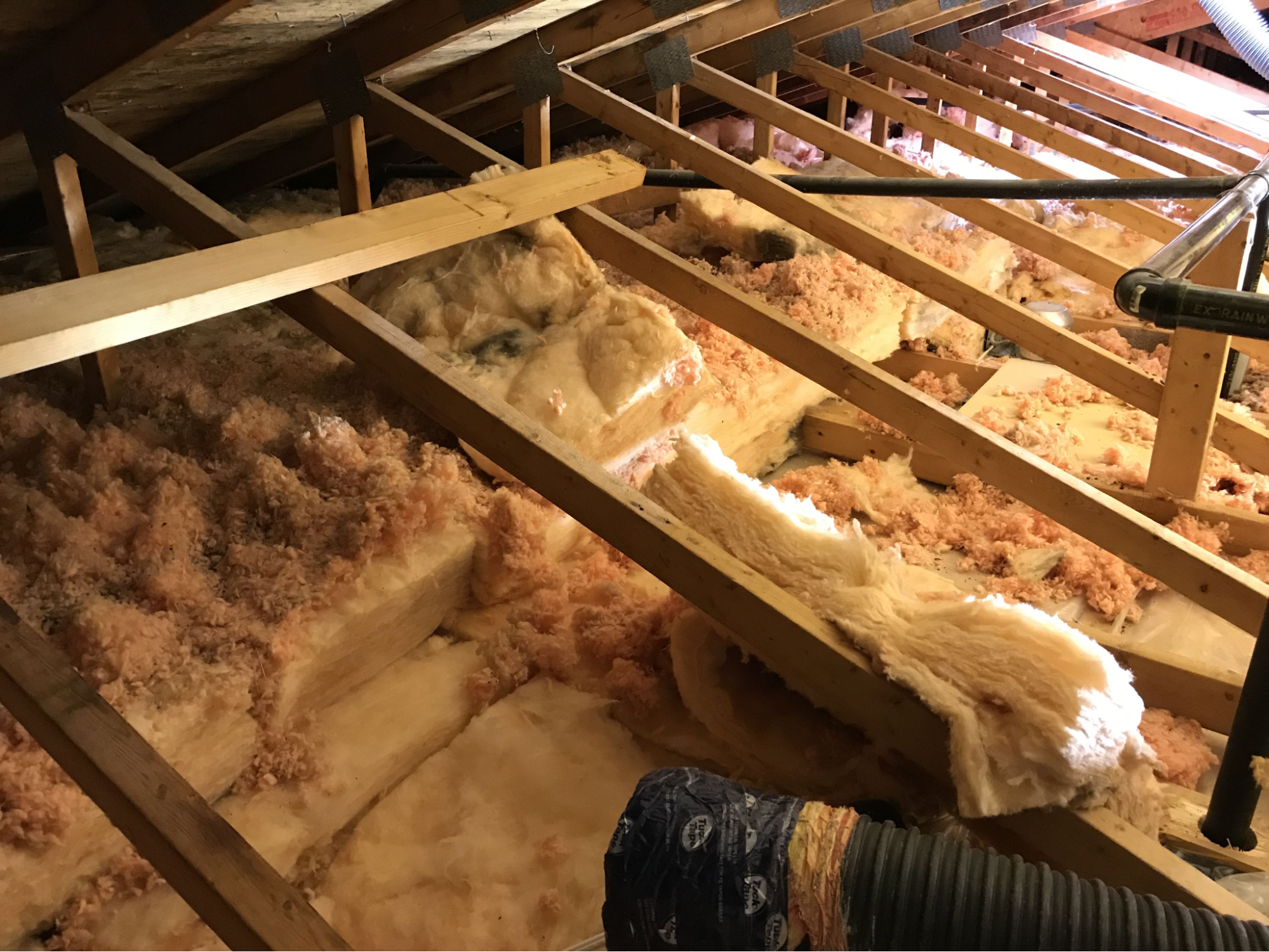
Many homeowners overlook the role insulation plays in indoor air quality. Over time, insulation can degrade, accumulate contaminants, and become a breeding ground for mold, dust mites, and other allergens. Removing outdated or damaged insulation is a practical step toward ensuring cleaner, healthier air inside your home.
Fiberglass and cellulose insulation break down over time, releasing tiny particles into the air. These particles can irritate the respiratory system, especially for individuals with allergies or asthma. In older homes, insulation may also contain remnants of construction debris, rodent droppings, or dirt that have settled in the attic or walls.
Insulation exposed to leaks or humidity can become a perfect environment for mold growth. Once mold spores enter the ventilation system, they spread throughout the home, leading to musty odors and potential respiratory issues.
Rodents and insects often nest in insulation, leaving behind droppings, dander, and urine. These contaminants introduce bacteria and allergens into the air, affecting overall indoor hygiene.
Some older homes still contain insulation materials that include harmful substances, such as asbestos or formaldehyde-based products. These materials can release toxins into the air, increasing the risk of long-term health issues.
A thorough assessment determines whether insulation is contaminated, damaged, or ineffective. Professionals inspect for mold, pest infestations, moisture damage, and airborne particulates.
Depending on the insulation type, professionals use specialized equipment to remove and dispose of materials safely. This prevents contaminants from spreading through the air during the removal process.
Insulation removal must follow environmental guidelines to prevent hazardous waste exposure. Replacing outdated materials with modern, eco-friendly options helps improve both air quality and energy efficiency.
By eliminating insulation that harbors dust, mold, and pests, homeowners experience fewer allergy-related symptoms and improved respiratory health.
Fresh insulation enhances airflow within walls and attics, allowing HVAC systems to function more efficiently and reducing the circulation of airborne pollutants.
Old or compacted insulation can cause temperature inconsistencies. New insulation ensures stable indoor temperatures, reducing humidity fluctuations that contribute to mold growth.
Removing insulation that contains asbestos, formaldehyde, or other volatile organic compounds (VOCs) minimizes exposure to harmful airborne chemicals.
A widely used option that offers energy efficiency and durability while minimizing dust accumulation.
Seals gaps effectively, reducing the risk of air leaks and moisture retention that can lead to mold.
Made from recycled materials, this option provides excellent thermal performance while being more environmentally friendly.
While some homeowners attempt insulation removal themselves, professional services ensure a safer, more thorough process. Experts use specialized tools to contain debris, prevent contamination, and properly dispose of hazardous materials. Hiring professionals also reduces the risk of damaging walls, attics, or HVAC systems.
After insulation removal and replacement, homeowners can take additional steps to maintain air quality:
If your insulation is outdated, damaged, or contaminated, removing and replacing it is a practical way to improve air quality and energy efficiency. Spray Tech Solutions specializes in safe insulation removal and installation, providing homeowners with cleaner, healthier indoor environments. Call us at (765) 480-8200 or email [email protected] to schedule an assessment.
Signs include visible mold, a musty smell, rodent activity, excessive dust, or inconsistent indoor temperatures.
Yes. Deteriorating insulation can release airborne contaminants, including mold spores and dust, which may cause allergies or respiratory problems.
The process typically takes one to two days, depending on the size of the area and the level of contamination.
Professional services use containment methods and industrial vacuums to minimize dust and debris, ensuring a clean process.
Temporarily, yes. However, replacing old insulation with modern materials improves energy efficiency and reduces long-term heating and cooling costs.
DIY removal can expose you to mold, dust, and hazardous materials. Hiring professionals ensures safety and compliance with environmental regulations.
Spray foam and fiberglass insulation are good options because they reduce dust accumulation and improve air circulation.
For minor projects, staying home is possible. However, for large-scale removals involving mold or hazardous materials, temporary relocation is recommended.
Costs vary based on the insulation type, contamination level, and labor. Contact Spray Tech Solutions for a detailed estimate.
Replace insulation with high-quality materials, clean HVAC ducts, and use air purifiers to maintain indoor air quality.